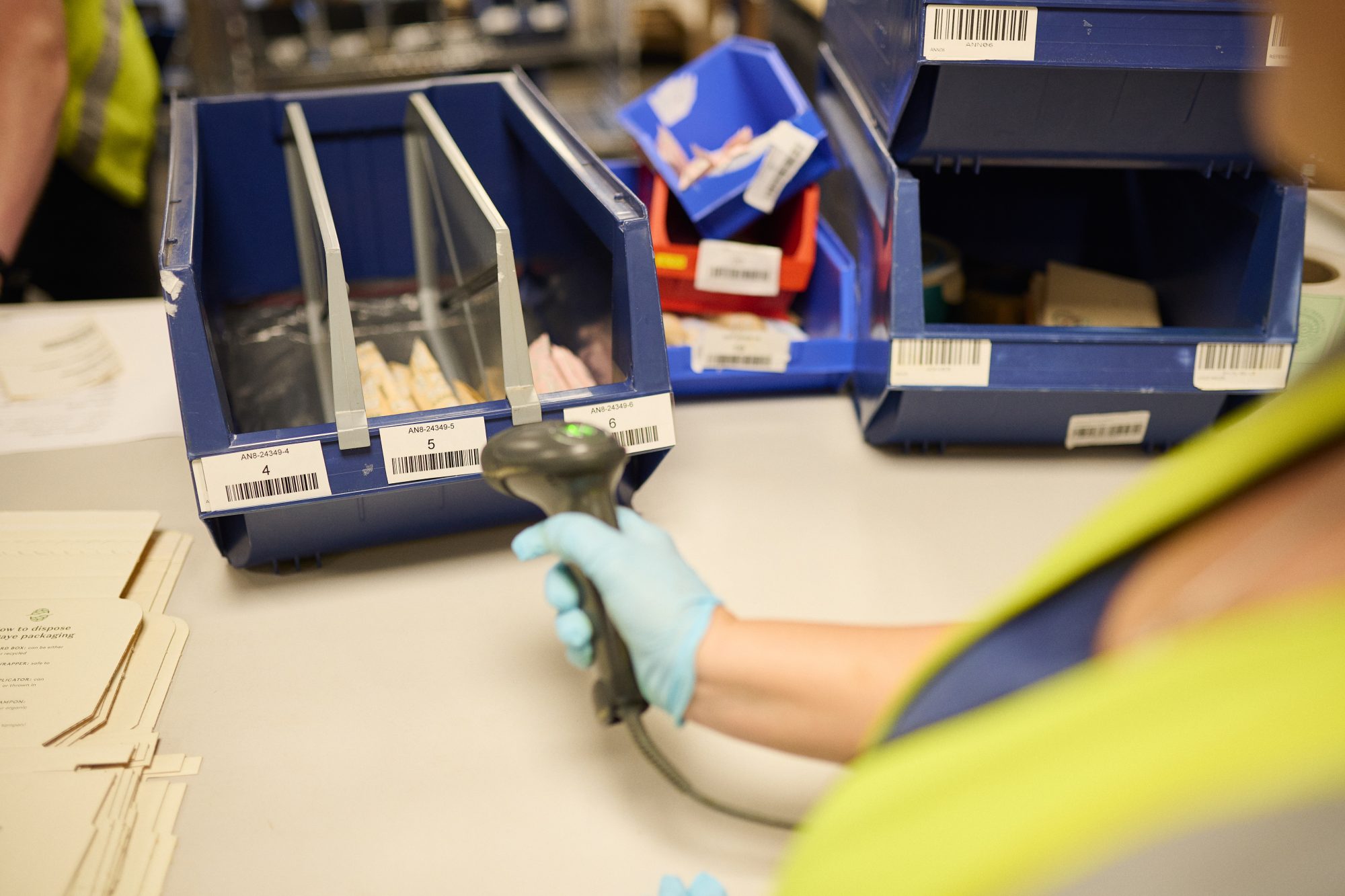Batch and serial number tracking is an essential part of the manufacturing process. This system helps ensure that control is maintained over the production process and that the quality of the products is maintained. In this article, we will look at what batch and serial number tracking is, the differences between batch and serial numbers, the importance of the right technology for batch control, and how 3PL batch and serial number tracking can help you take control of your stock. We will also look at the benefits of batch and serial number tracking and some tips for implementing it.
What is Batch and Serial Number Tracking?
Batch and serial number tracking is a process used to identify and track products. This process helps to maintain control over the production process and can be used to ensure the quality of the products. It also helps to identify and trace any problems that may arise in the manufacturing process.
Batch and serial number tracking involve assigning each product with a unique identifier. This unique identifier is used to track the product from production to sale. It also allows for the tracking of the product’s history, such as where it was produced, when it was produced, and who produced it. This information can be used to identify any potential problems with the product and to take corrective action.
What is a Batch Number and how it works?
A batch number is a unique identifier assigned to a group of products that were manufactured together. It is used to identify and track the products from production to sale. The batch number is typically printed on the product’s label or packaging.
The batch number can be used to track the production process and to identify any potential issues with the product. For example, if a product is found to be defective, the batch number can be used to trace the product back to the production line and determine the cause of the defect.
Batch picking works in 4 steps:
1. Generate picking lists for each order
A document called a picking list is used to convey information about the items that must be sent to a customer, such as SKU(s), quantities, and storage location(s) of the inventory.
When orders have the same picking lists, batch picking is the most effective method. This enables the picker to have a queue of orders ready for dispatch to various customers.
Printed lists are uncommon in today’s world. Instead, wearable devices and technology are utilised in modern warehouses to combine, allocate, and fulfil each order, eliminating the need for paper.
2. Group orders by common items
To perform batch picking, orders that have identical items must be combined into a batch. An order management system or a warehouse management system (WMS) can automatically group orders that are batchable and contain the same items and quantities.
3. Give a batch to a picker
A warehouse management system (WMS) can create batch pick lists for each picker, optimising the retrieval process of items. However, if done manually, it may be necessary to create an efficient route for each picker to retrieve all the SKUs.
4. Pick all items in the order
To avoid wasting time or taking unnecessary steps, each picker must adhere to the picking list and optimise their route to select the correct items. After picking the SKUs for the batch orders, the orders can be passed on to a packer, and the picker can proceed with the next batch.
The advantages of batch picking
1. Less foot travel for employees
Warehouses can be enormous, and traveling between each section of a warehouse can be time-consuming. If employees must retrieve items from multiple, distant locations, order fulfilment will take longer. Batch picking simplifies operations by allowing workers to complete the same task in bulk, reducing the distance they need to travel and increasing their productivity.
2. Faster picking rates
Efficient order fulfilment is a significant factor in the success of warehouse operations. Batch picking can help employees minimize their movement around the warehouse, allowing them to complete their tasks more quickly. By reducing travel time between orders, pickers can process orders more rapidly, decreasing the average time required to fulfil an order.
3. Reduced costs
As productivity rises, the amount of manpower required for picking decreases, resulting in minimal overtime and subsequently lowering the expenditure on labour costs.
What is a Serial Number?
A serial number is a unique identifier assigned to a single product. It is used to identify and track the product from production to sale. The serial number is typically printed on the product’s label or packaging.
The serial number can be used to track the production process and to identify any potential issues with the product. For example, if a product is found to be defective, the serial number can be used to trace the product back to the production line and determine the cause of the defect.
What is the Difference between Batch and Serial Numbers?
The main difference between batch and serial numbers is that batch numbers are assigned to a group of products that were manufactured together, while serial numbers are assigned to a single product. Batch numbers are typically used to track the production process and to identify any potential issues with the product. Serial numbers are typically used to identify and track individual products.
One example of a product that uses batch numbers is cosmetic products. Each batch of cosmetic products produced by a manufacturing company is given a unique batch number, which allows the product to be traced and identified in the event of a recall or quality issue. This helps ensure the safety and quality of the medication being distributed to consumers.
The Importance of the Right Technology for Batch Control
The right technology is essential for effective batch control. Technology such as RFID tags and barcode scanners can be used to track and identify products. This technology can help to ensure that the right products are being produced and that any problems are identified and addressed as quickly as possible.
In addition, software technology can be used to automate the batch and serial number tracking process. This can help to reduce the amount of time and effort required to track and control batches of products. It can also help to ensure that the data is accurate and up-to-date.
How Batch and Serial Number Tracking Can Help With Control
Batch and serial number tracking can help to ensure that control is maintained over the production process. It can also help to identify and trace any problems that may arise in the manufacturing process. This can help to ensure that only the highest quality products are produced.
Batch and serial number tracking can also help to improve the efficiency of the production process. Tracking the production process can help identify any areas that need improvement and ensure that the production process is running as smoothly as possible.
Benefits of Batch and Serial Number Tracking
Batch and serial number tracking can provide many benefits, including:
- Improved control over the production process
- Improved product quality
- Reduced costs associated with product recalls
- Improved efficiency of the production process
- Improved traceability of products
- Reduced time and effort required to track and control batches of products
3PL Batch and Serial Number Tracking Software Solutions
There are many software solutions available to help with batch and serial number tracking. These software solutions can help to automate the process and ensure that the data is accurate and up-to-date. They can also help to reduce the amount of time and effort required to track and control batches of products. But reliable and robust software solutions can differ quite a lot and you won’t always get the level of service you would expect.
3PL’s fusion software lets you automate your order fulfilment at scale, optimise your operations for efficiency and cost, use the delivery experience to beat shopper expectations and create better customer experiences that bump up long-term loyalty. Our team will help you set up and implement batch and serial tracking to get your operations running smoothly
Tips for Implementing Batch and Serial Number Tracking
To ensure the success of batch and serial number tracking, there are some tips to keep in mind:
- Make sure that the right technology is in place to track and control batches of products effectively.
- Make sure that the data is accurate and up-to-date.
- Ensure that the right processes and procedures are in place to track and control batches of products.
- Ensure that all relevant stakeholders are aware of the batch and serial number tracking process.
- Ensure that the batch and serial number tracking process is integrated with other systems.
3PL is your go-to partner for batch and serial number control
Batch and serial number tracking are essential for the production process. 3PL have years of experience with this service and know the ins and outs of getting it set up. Our dedicated team will help you with the set up and walk you through the Fusion portal where you will be able to review/track and analyse every order. You’ll gain insights into the logistics of your products and orders allowing you to provide a better service to your customers and ensure you’re delivering the highest quality of products.
You source and sell – leave the rest to 3PL!
Speak to our team today to get started.







